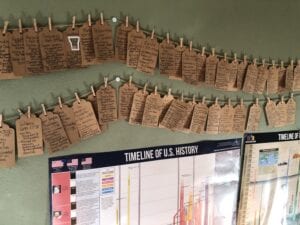
How to Create Your Own Stargazing Tour
Photo by Greg Rakozy
It’s hard to believe that it was only about eight years ago that I bought “my” first telescope. (I put “my” in quotes because it was actually for my 8 year old son, but I ended up using it far more than he did!) Since that time astronomy has become such a big part of my life that, if I was forced to describe myself in one (hyphenated) word, it might be “amateur-astronomer”! Our family loves to travel, and whenever possible I like to incorporate some stargazing into the vacation. While I’m definitely not the wisest astro-aficionado, I have learned several things over the past eight years that I wish I’d known earlier, and I’m hoping to pass on this knowledge to those who are interested so you can create your own stargazing tours.
Your Local Astronomy Clubs
If you’re considering getting into astronomy, one of the easiest and cheapest first steps would be to contact your local astronomy club. A Google search of “astronomy clubs near me” will likely bring several up, but another good source would be this site. Clubs come in all shapes and sizes, so don’t be afraid to try several local clubs until you find a good fit. Almost all of them will offer at least one “Star Party” per month, where members gather in one spot and invite the public to observe through the many scopes they have brought with them. It’s a great place to meet members and to ask questions about their equipment. Some clubs also rent telescopes (or even let you check out scopes from their “scope library” for free!). Furthermore, in the event you decide to buy your own scope, members are often upgrading their own equipment and selling their older scopes for pennies on the dollar to other members.
Astronomy Apps
Although I’m loath to encourage anything that gets us staring at our phones more, I have to admit that there are some great, free astronomy apps that will help you find and identify objects in the night sky quickly and easily. Android users can download “Sky Map”, which has a red-light mode (easy on your eyes in low-light situations) and other great settings that the user can customize to their liking. Apple users could install Star Walk 2 or SkySafari, which are comparable in their functionality. All of these apps allow you to simply hold your phone up to the area of the sky you are looking at and see a labeled image of the constellations, stars, and/or planets (…and even comets when they’re around!).
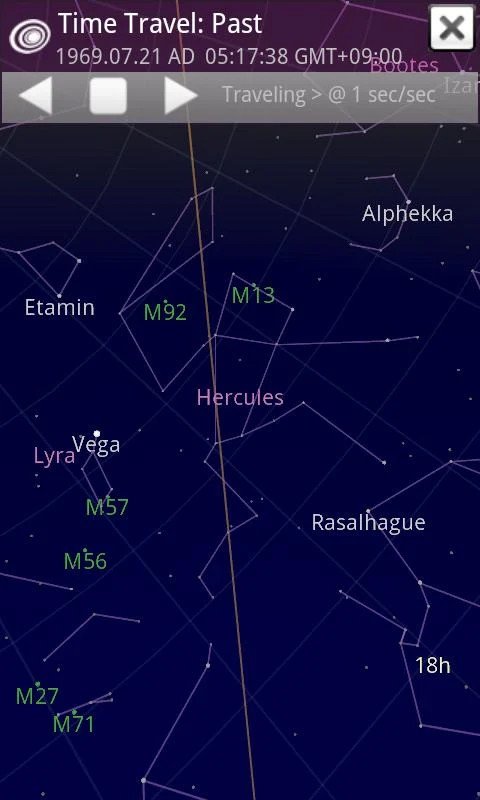
Buying a Telescope
I would hold off on buying a scope until after you’ve checked out several from your local clubs and star-parties. You’ll also get lots of advice from these friendly folks. I went down the other route of buying a scope before I knew anything about them, and I wish I hadn’t. This telescope was only $75 (and also included a microscope!). While it did instill a love of astronomy in me, it would have been much better if I had put that $75 towards a better scope.
Most cheap, department store scopes have a major Achilles heel: a poor tripod mount. Ask any astronomer: the mount is as important–if not more–than the scope itself. You could have a ten million dollar telescope, but if it’s on a flimsy mount that lets it shake about, you may as well not bother looking through it!
Top Picks
Nearly all astronomers recommend beginners start with a type of telescope known as a Dobsonian; they have extremely sturdy mounts. They also give you the most “bang for the buck” as far as image quality. Furthermore, they are not only “beginner” scopes… you’ll see for yourself at any star party that many seasoned veterans still use these “light buckets”, which are actually the best kind of telescope for deep-sky objects.
A good set of binoculars is also a good, inexpensive starting option. They’re great for the moon and will even bring up detail in some deep sky objects (galaxies and nebulae). Furthermore, they’re great for wildlife watching during the day!
Whenever anyone asks me for advice on this, I recommend the AWB Onesky, a small Dobsonian that collapses for travel purposes. Even though I now own a much bigger, computerized scope (that is taller than most people who look through it!), I still keep my Onesky as my travel scope. Furthermore, the non-profit organization you buy it from (Astronomers Without Borders) donates one scope to a needy school or community for each one bought!
Planning Your Stargazing Trips
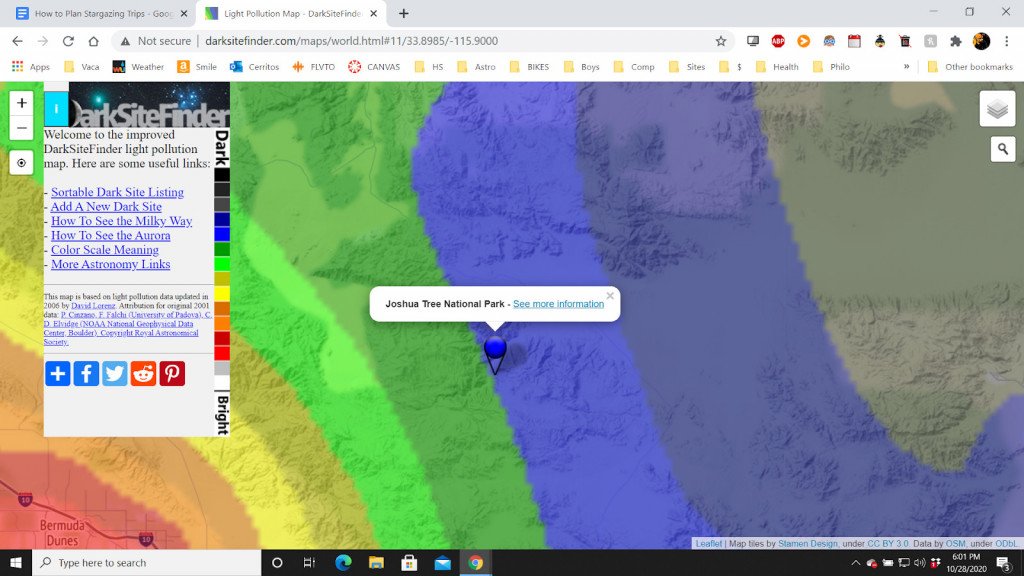
So now you’ve caught the astro-bug, you’ve bought/borrowed a telescope, and you’re ready to head out to a dark-sky site!
Timing
The first thing you’ll want to consider is the moon’s phase. A full moon is beautiful, but it’s incredibly bright. It will help you if you’re planning night hikes, but it can completely ruin a planned stargazing session. I have taken several night hikes under a full moon in Joshua Tree National Park–an internationally recognized “dark sky” oasis… but with the full moon I may as well have been in downtown Los Angeles. You will see only the planets and a handful of the brightest stars under these conditions. I recommend you check the phase on a site such as this, and go as close to the new moon as possible. Definitely avoid any phase greater than 50% (a “gibbous” moon).
Location, Location, Location
At least as important as timing is your location. A city will have far too much light pollution (the world’s one exception is Flagstaff, Arizona, which has worked hard to limit light pollution). The good news is that many cities are a short drive from excellent skies, and many other locales, such as national parks, are well-known for their pristine dark skies. The International Dark Sky Association has a list of areas of exceptional night time beauty. My favorite planning site is DarkSiteFinder, which superimposes a color-coded level of light pollution over maps of the entire world. When planning a stargazing vacation I’ve often been able to find a dark, or darker, sky on this site that would be impossible to find any other way.
For example, Joshua Tree National Park is an excellent site for stargazing, but if you look at the screenshot above, you’ll notice there is a “rainbow” of light pollution in the park. The bottom-left (southwestern) side of the park has a great deal of light pollution from the neighboring city of Palm Springs, while the top-right (northeastern) side is pristine. Even within the same “dark sky” park, your experience can vary greatly! I zoom in on the darkest areas and find those that look like they’d be a good place to set up your scope. You’ll want to be able to get away from busy roads (with cars headlights), but you’ll also want to try and verify it’s not on private property. I’ve found Bureau of Land Management and National/State parks are some of the best places. If you have an AWD/4WD vehicle, you’ll multiply the number of areas open to you by an order of magnitude. Most of my favorite stargazing sites are along dirt roads in the desert southwest. Many of these spots permit overnight camping so you can car-camp if you’re observing until late in the evening
Share the Wonder
I hope you get to enjoy stargazing with your friends and families. To gaze outward is to gaze within. In the words of Carl Sagan, “We are made of star-stuff. We are a way for the universe to know itself.”
This guest post was contributed by So Cal Wanderer
socalwanderer
I’d like to send you a free gift!
The Curious Traveler’s 5 Step Guide to More Meaningful Trips
Let's Connect
DO YOU WISH YOU COULD TRAVEL MORE?
We love to learn from our guest writers and appreciate their expertise! Visit her website by clicking on the image or name below.
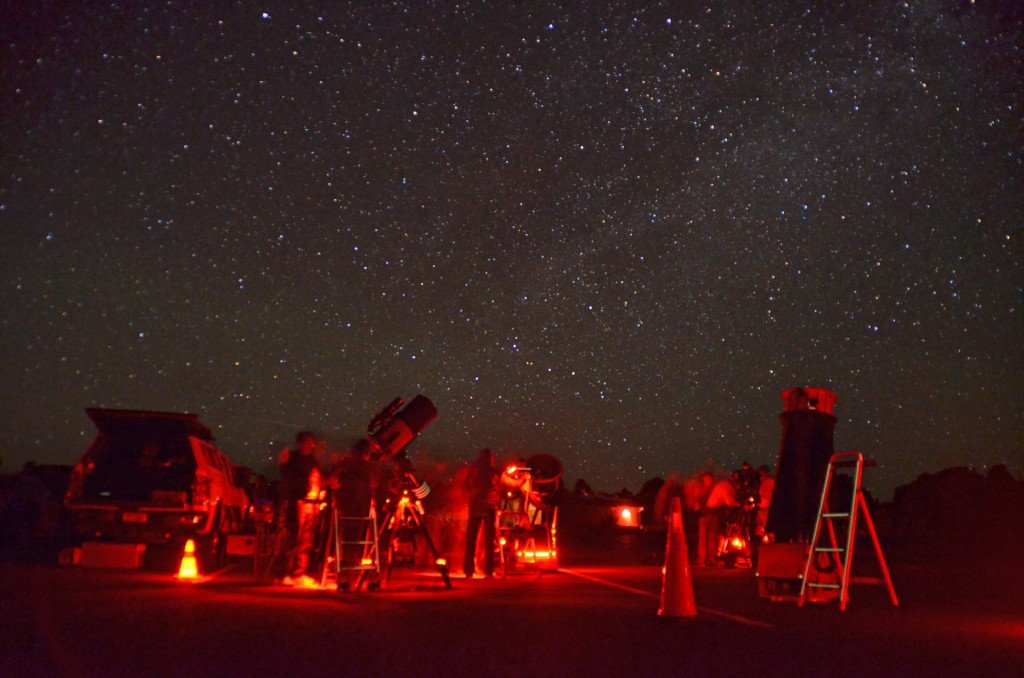


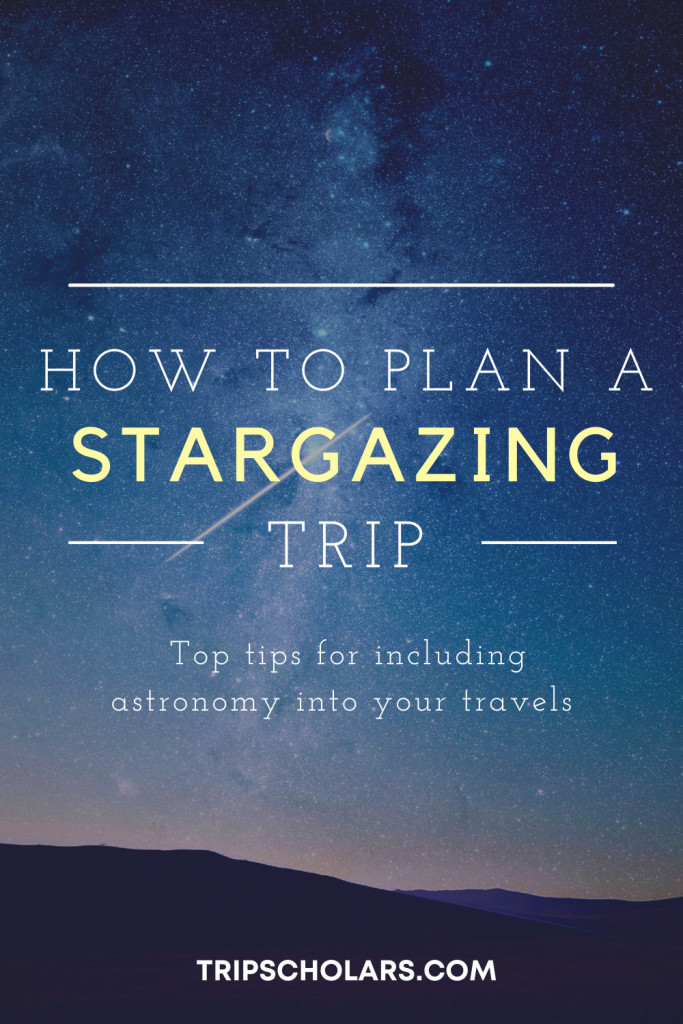
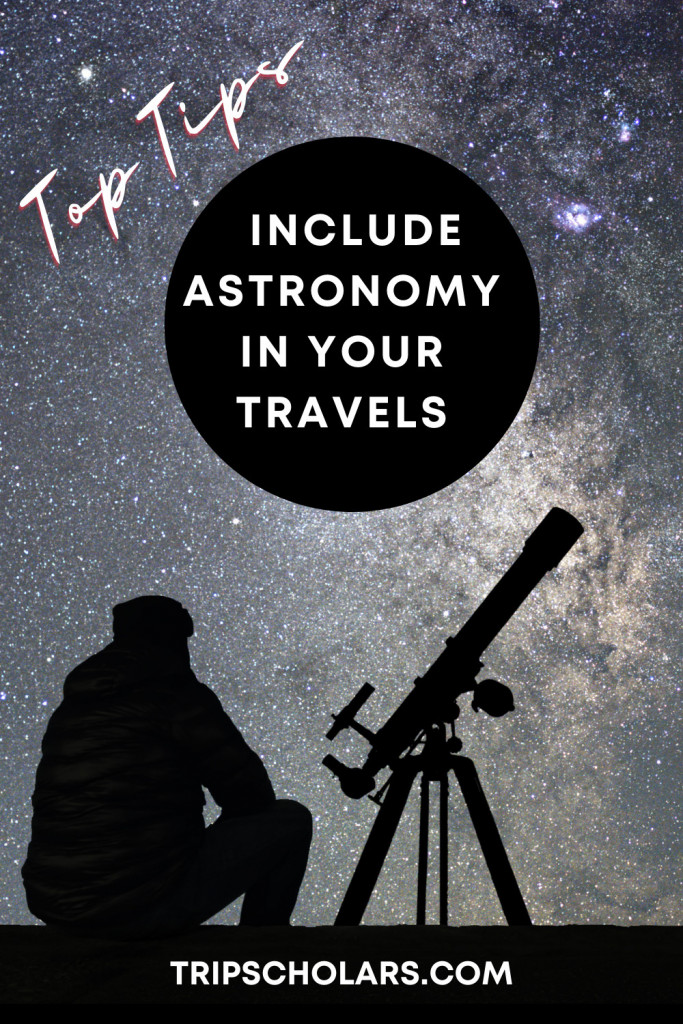

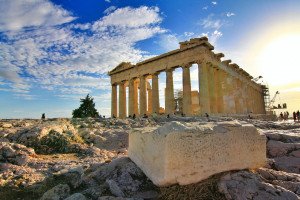

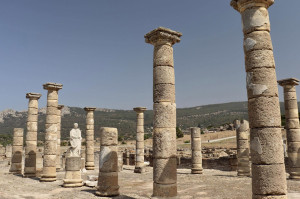




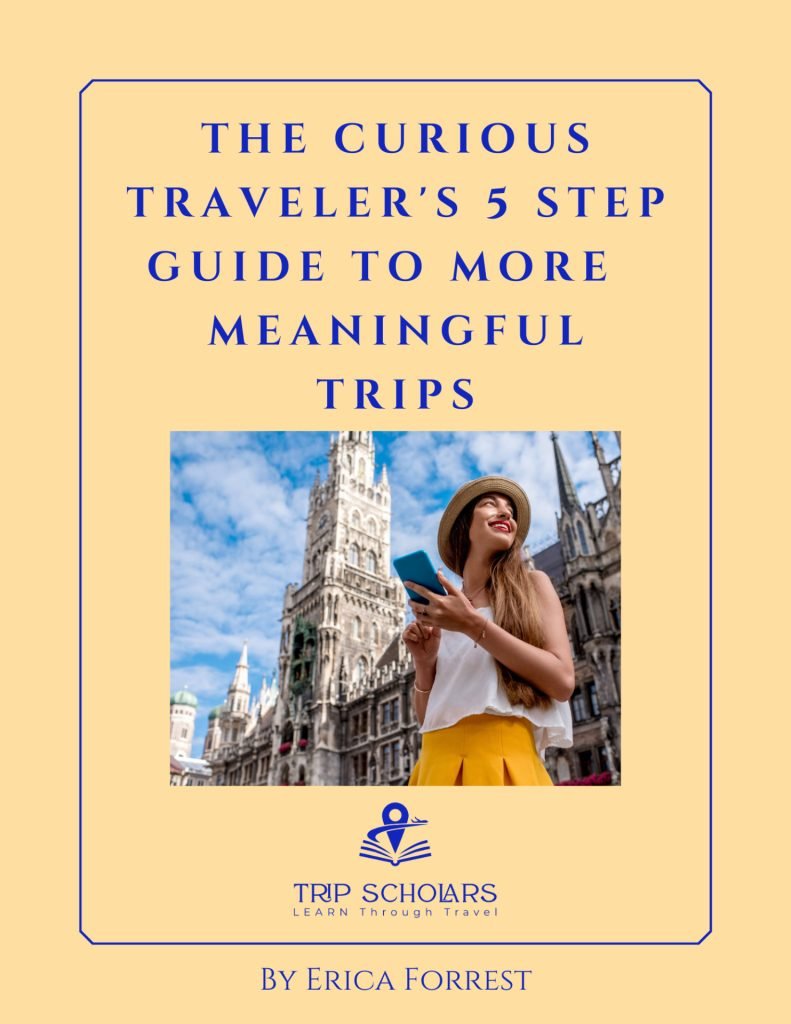
10 thoughts on “How to Create Your Own Stargazing Tour”
What a cool thing to do! It gets harder and harder to see the stars at night!
Yes, it really is astounding! Light pollution is such a limitation, I hope you can use these resources to find darker skies to enjoy.
This is great information! I’ve been intrigued by star gazing, but I’ve never done it. Traveling would lend itself to star gazing sometimes, but there would be less lights than in the city where I live. Pinned your post!
I’m glad you found it useful! Yes, so many trips bring us near darker skies so stargazing is even more exciting than it is in cities. I hope you get to enjoy it soon!
I’d love to plan a stargazing trip! It’s so disappointing living somewhere where I can’t see the stars at night due to light pollution! I might try this out this summer. Thanks for the great guide!
Thanks, I’m glad you enjoyed it! I hope you can use these resources to find a dark sky area nearby, or on an upcoming trip.
I’ve actually always wanted to do something like this, but had no idea where to start! I was thinking to go to an observatory maybe. These are all great tips and very helpful!
Wonderful, I am happy it is helpful and am excited for you to enjoy some stargazing! You will love it 🙂
Visiting an observatory is also a great idea. Many of them have multiple scopes available to the public (check their calendars) and some have interesting visitor centers too. We’ve done quite a bit of stargazing on our travels and visiting the Mauna Kea Observatories’ Visitor Center on the Big Island of Hawai’i stands out as a peak life experience!
Enjoy!
Fascinating post! I did an astrophotography night in New Zealand and would love to do more, the night skies are so amazing!
I have been trying to go on a stargazing photo shoot with a local night photography expert but the weather has not been obliging. While I am not in a dark sky region, the local park I live by is far from cities and has no artificial light. Thanks for the tip on the astronomy app.